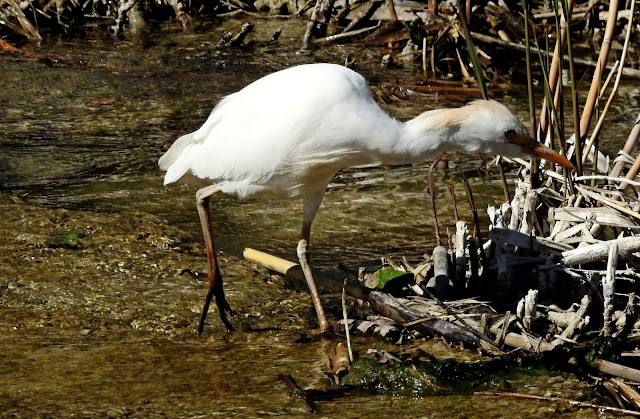The European serin, or simply the serin (Serinus serinus), is a diminutive member of the finch family, Fringillidae. This sprightly bird is the smallest within its family, closely related to the Atlantic canary. It is characterized by its short tail and a length that spans a mere 11 to 12 centimeters. The serin's plumage is a tapestry of nature's palette, with upper parts dappled in dark-streaked greyish green and a conspicuous yellow rump. The underparts are a canvas of yellow breast and white belly, both adorned with heavy streaks.
When attempting to identify the European serin, look for the male's radiant yellow face and breast, which stand out against the greenish backdrop of its feathers. The male also boasts yellow wing bars and yellow tail sides, which can be quite helpful in distinguishing it from similar species. Both sexes share a buzzing trill of a song that resonates through their Mediterranean habitats.
The European serin is partial to open woodland and cultivated areas, often with a sprinkling of conifers. These environments provide the perfect backdrop for breeding and foraging.
This species has a breeding range that extends across southern and central Europe and into North Africa. Populations along the southern and Atlantic coasts tend to be resident, while those in the north are migratory, seeking warmer climates in southern Europe during the winter months.
Outside of the breeding season, the European serin is a sociable creature, forming flocks that may sometimes mingle with other finch species. It is an active and often conspicuous bird, its presence easily announced by its distinctive trill.
The serin's song is a distinctive buzzing trill, a sound that becomes part of the ambient music in regions where these birds are common.
The European serin weaves its nest within the shelter of a shrub or tree, where it lays a clutch of 3 to 5 eggs. The chosen breeding habitats are often areas of open woodland and cultivation, with a preference for some conifers.The diet of the European serin is predominantly seeds, but it does not shy away from including insects during the breeding season, providing essential protein for its young.The IUCN Red List categorizes the European serin as Least Concern, indicating that, for now, this species does not face any imminent threats to its survival.
%20(Serinus%20serinus)%2020.jpg)
%20(Serinus%20serinus)%2021.jpg)
%20(Serinus%20serinus)%2022.jpg)


%20(Passer%20montanus)%2020.jpg)


%2020.jpg)
%2021.jpg)
%20(Monticola%20solitarius)%2020.jpg)








%20(Saxicola%20rubicola)%2020.jpg)
%20(Saxicola%20rubicola)%2021.jpg)
%20(Saxicola%20rubicola)%2022.jpg)
%2020.jpg)


%2020.jpg)
%2020.jpg)
%2021.jpg)
%2020.jpg)





%2020.jpg)




